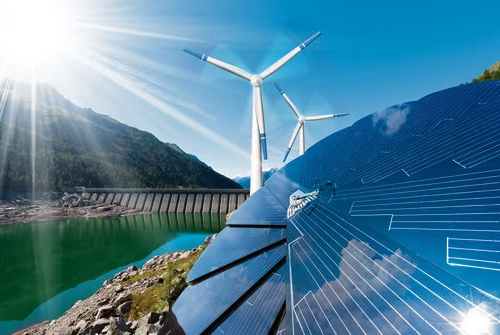In Short : Europe faces significant challenges that could impede the achievement of its 2030 renewables target. These headwinds include regulatory uncertainties, policy changes, and insufficient investments. To stay on track, European countries must prioritize stable policies, enhance regulatory frameworks, and attract more investments in renewable energy projects. Additionally, fostering international collaborations and accelerating innovation can further bolster Europe’s renewable energy transition, ensuring a sustainable and greener future for the continent.
In Detail : Morningstar’s report finds that increased capex costs and permitting delays could impede further progress
Europe leads the world in renewable energy adoption, but headwinds are forming that could impede further progress, according to new research from Morningstar.
Renewable energy supplies about 20% of total energy demand in Europe and is now aiming for 42.5% of total energy demand by 2030.
However, several of the tailwinds that propelled it to its current level in the past decade are shifting and becoming headwinds, stated Morningstar.
Renewable energy sources are not as cheap as often reported, the analysis found.
Although costs have fallen sharply, the true cost of any project depends on many factors, including geography, capital intensity, and the cost of capital, resulting in a “meaningful overlap” of costs for each power source.
Offshore wind costs have soared 50% because of higher construction and capital costs and resulted in project impairments, renegotiations and failed auctions.
Prices will have to increase substantially to ensure renewable targets are met because these costs are unlikely to revert to prior levels.
Costs for offshore wind have soared largely due to higher turbine prices, which spiked in 2022 after years of declines.
Morningstar does not expect a return to prior levels, which will keep pressure on offshore wind costs and risk renewable energy targets.
Permit delays for renewable projects are further risking renewable energy targets as Europe has some of the longest permit times in the world and is well above its own standard.
It will be difficult for solar to fill the gap left by higher costs and delays of offshore wind projects as it holds its own risks and issues.
Most notably, solar is more expensive in Northern Europe relative to Southern Europe where offshore wind makes more sense as it provides more energy with less variability.
Global inflation and higher rates are the most notable as both substantially increase costs, which threaten future and current project development, particularly offshore wind.
These are compounded by continued permit delays throughout Europe while the introduction of greater subsidies makes the US a more appealing place to invest.
Tancrede Fulop, Senior Equity Analyst, Morningstar, said: ”The ramp-up of renewables over the last decade that granted to Europe its leadership position was propelled by two tailwinds: falling interest rates and construction costs.
“Since the end of 2021, these tailwinds have reversed and become obstacles.
“In addition, the inflation reduction act has made the US more competitive than Europe for manufacturing and development of renewables.
“Finally, ecology and ecology-friendly parties might lose their majority at the European union parliament elections next June which could be bearish for CO2 prices.”

